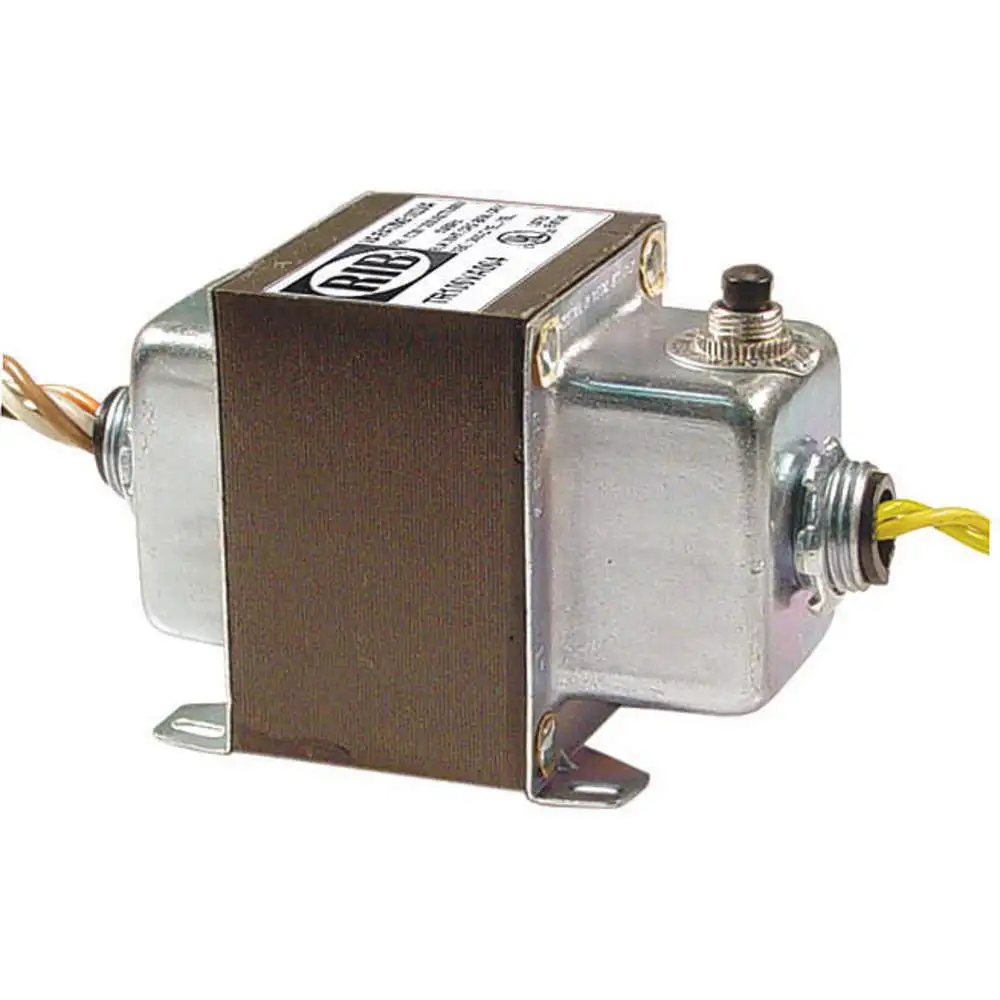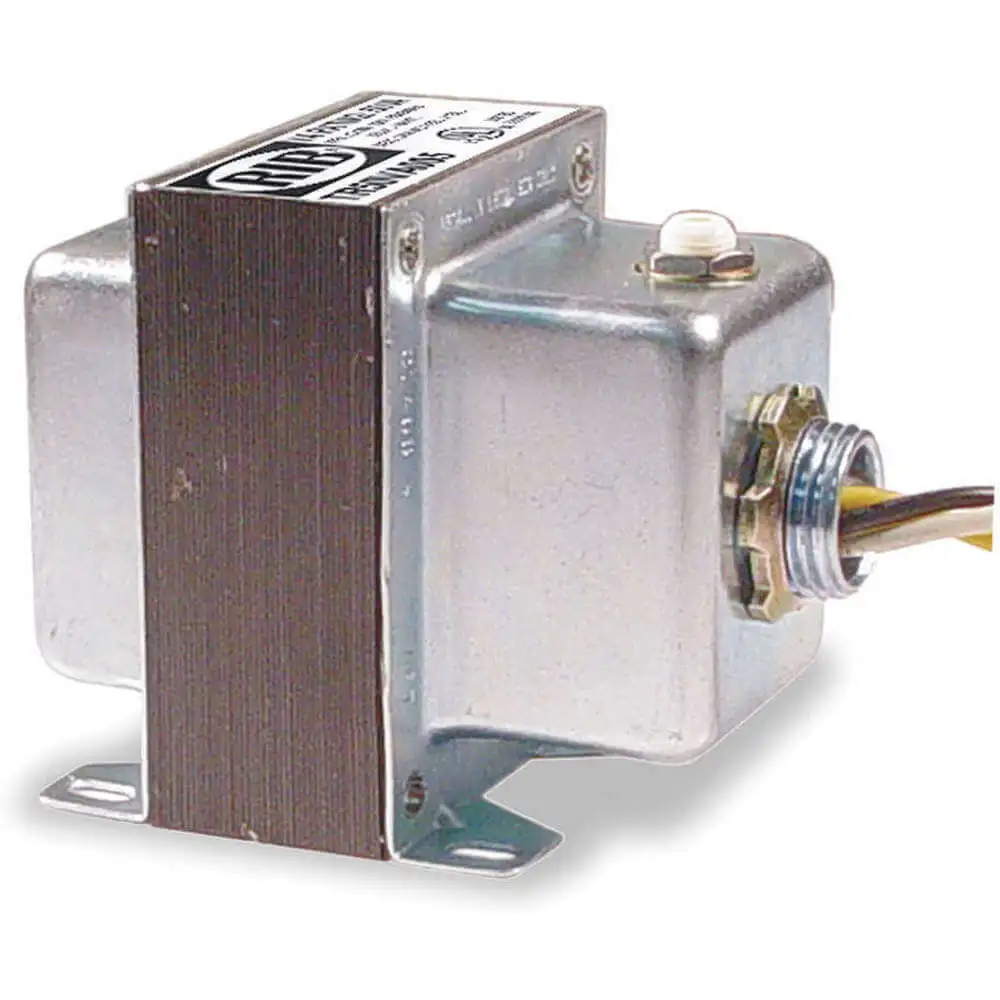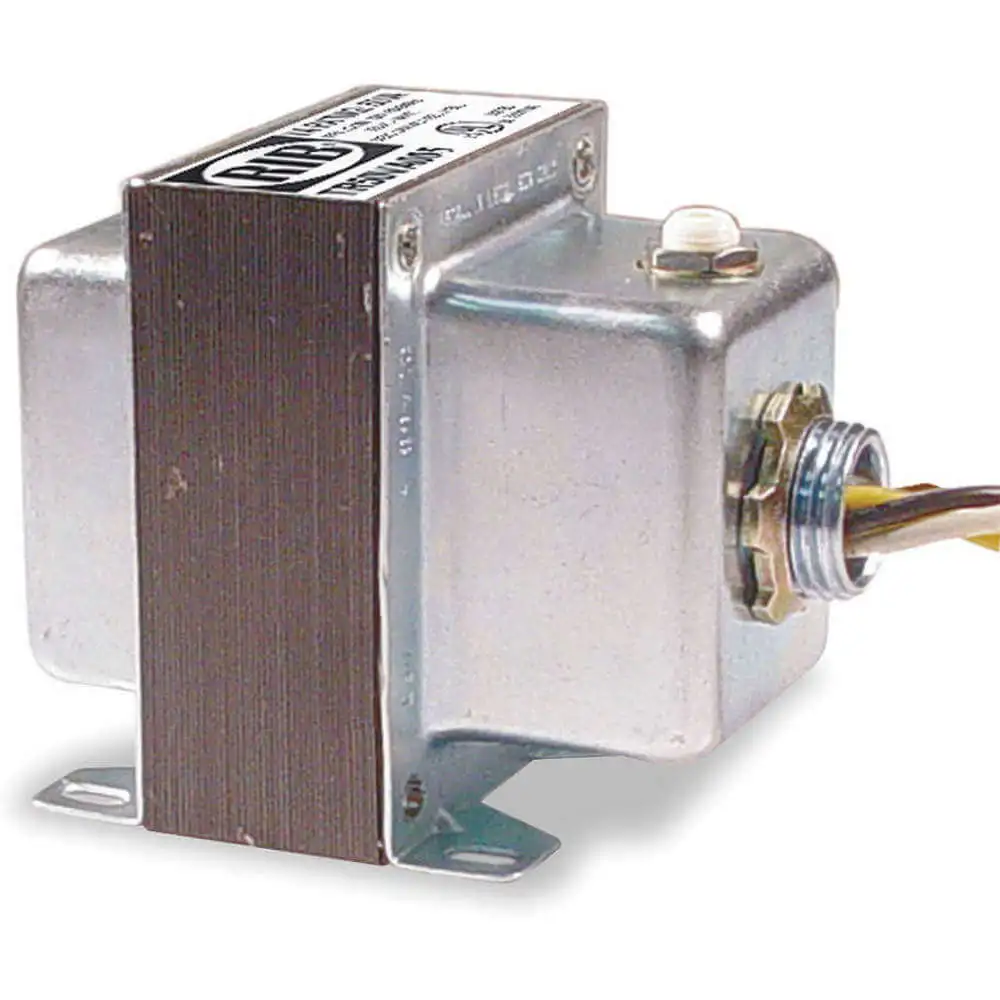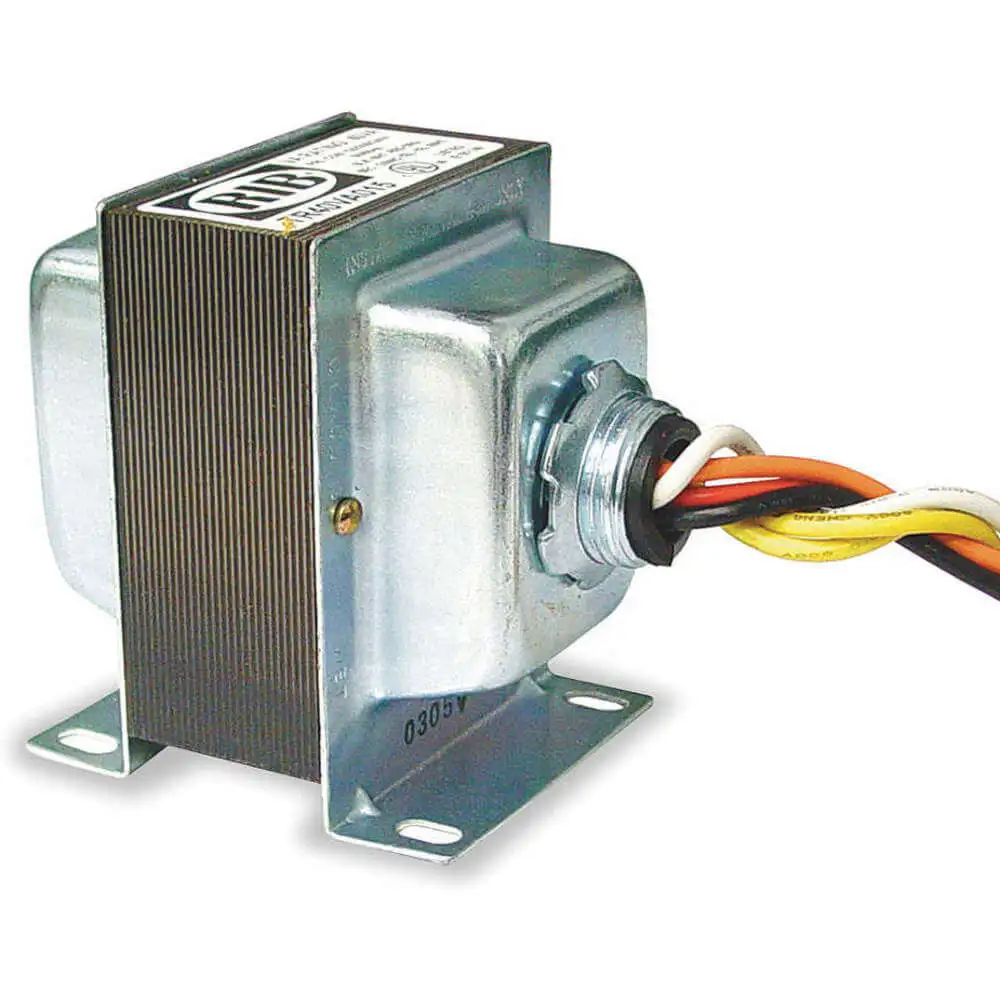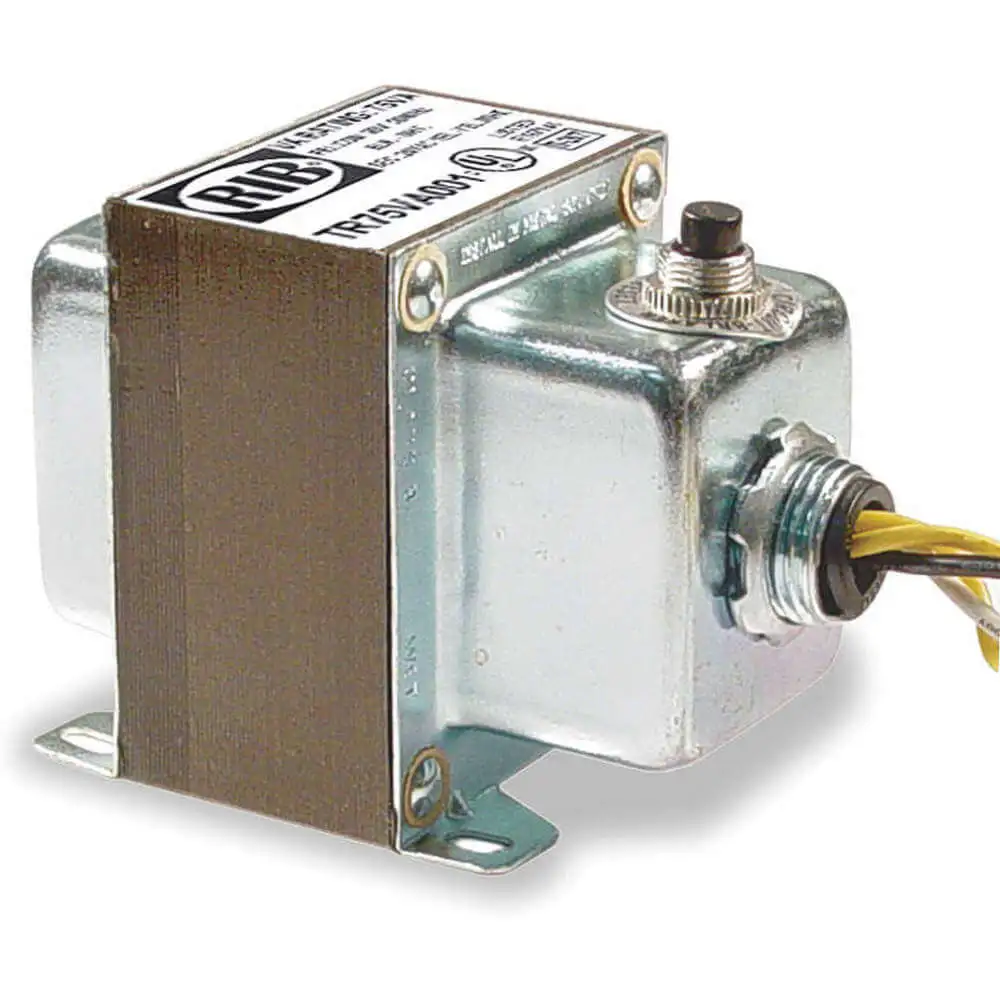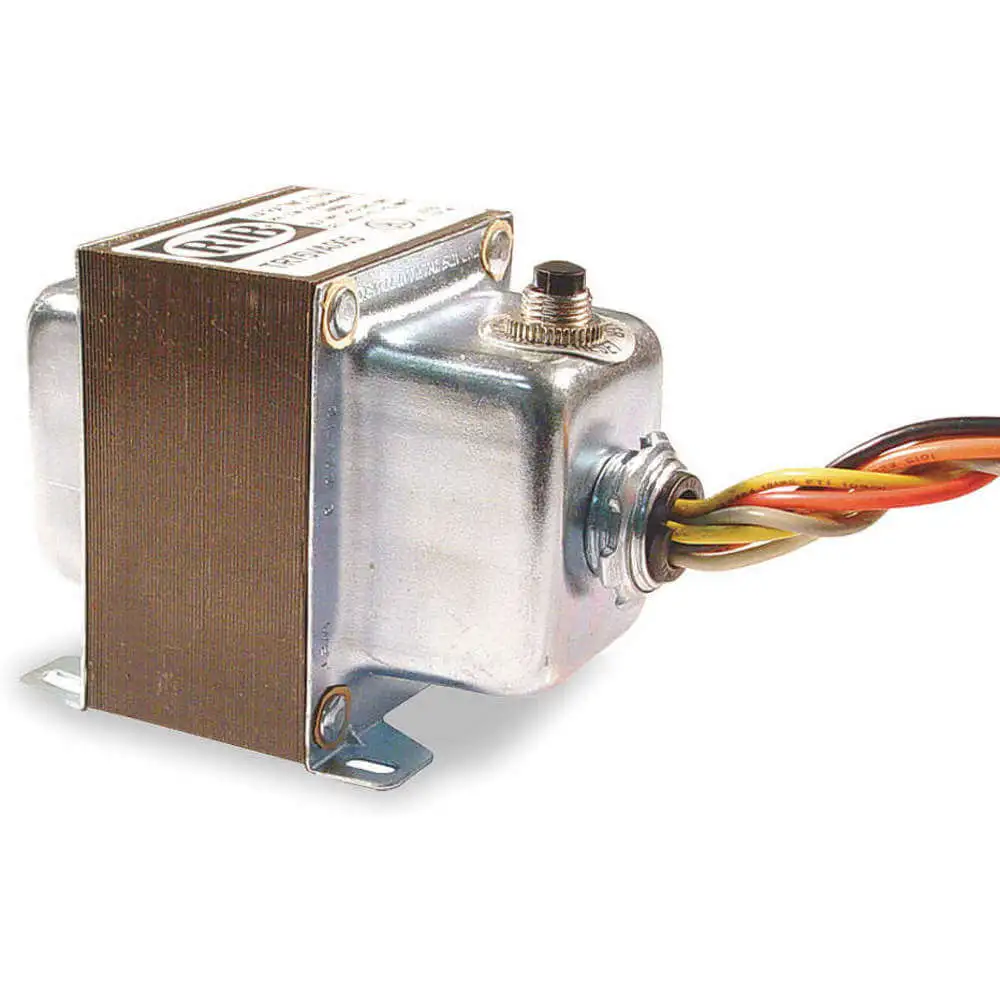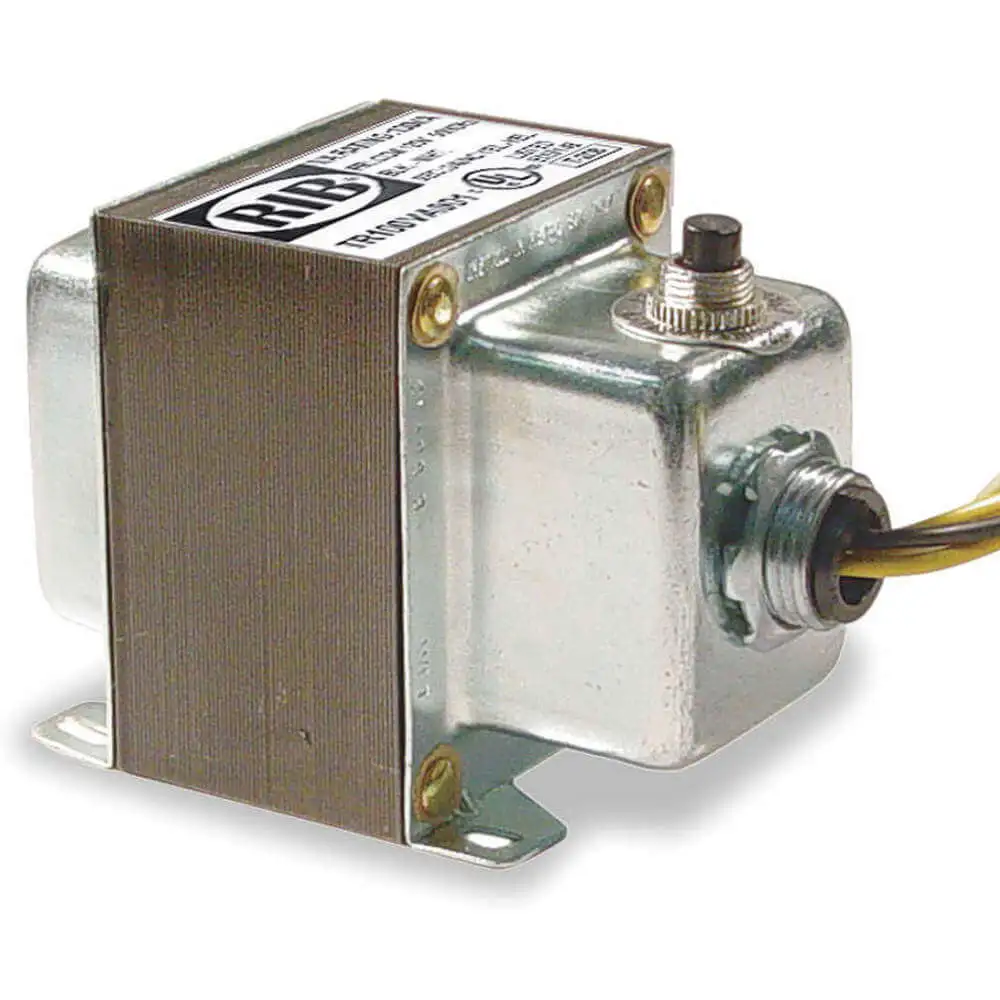Functional Devices, Inc. RIB TR100VA004 Class 2 transformer converts higher voltages to safe and standardised Class 2 low-voltage levels. This transformer is utilised to power control devices such as thermostats, relays and electronic components in HVAC systems, lighting controls and industrial automation.
Working Mechanism:
- Functional Devices TR100VA004 Class 2 transformer operates based on fundamental transformer principles. When an alternating current (AC) is applied to the primary coil, it induces a magnetic field.
- This magnetic field, in turn, induces a voltage in the secondary coil, resulting in the desired output voltage of 24VAC.
Features:
- Functional Devices, Inc. RIB TR100VA004 Class 2 transformer features multiple input voltages to support a wide range of input voltages, including 120VAC, 240VAC, 277VAC and 480VAC.
- It comes with a 100VA rating for handling various loads in HVACR control systems.
- This Class 2 transformer is equipped with a circuit breaker to enhance safety by protecting against overloads and faults.
- It is equipped with pigtails for primary connection simplifying the wiring process.
- This Class 2 transformer features dual 1/2 in hub and foot mounting, providing flexibility in installation for different applications.
- It includes an open enclosure style allowing easy access and visibility to internal components, facilitating maintenance and troubleshooting in HVAC control.
Frequently Asked Questions:
Q. How does the open enclosure style of Functional Devices TR100VA004 Class 2 transformer benefit users?
A. The open enclosure style allows for easy access and visibility to internal components, facilitating maintenance and troubleshooting.
Q. How to install this Class 2 transformer?
A.
- The transformer should be installed in a dry, well-ventilated area away from sources of heat and moisture. The area should also have adequate space for maintenance and servicing.
- The transformer should be securely mounted on a flat surface using bolts or brackets that are appropriate for the transformer's weight and size. The mounting surface should be free from any debris and should be able to support the weight of the transformer.
- Before connecting the wiring, ensure the power supply to the transformer is switched off. Connect the primary and secondary wiring according to the wiring diagram provided with the transformer. The wiring should be done by a qualified electrician who has the necessary knowledge and experience to handle electrical installations safely.
- After the wiring is complete, the transformer should be tested to ensure it is functioning correctly. This can be done using a multimeter or a voltage tester. If any issues are detected, they should be addressed before the transformer is put into service.
- Once the transformer has been tested and found to be functioning correctly, it can be put into service. Ensure that the transformer is properly labelled with its voltage and power ratings and that all necessary safety precautions are taken when operating the equipment.
 Change Country
Change Country
